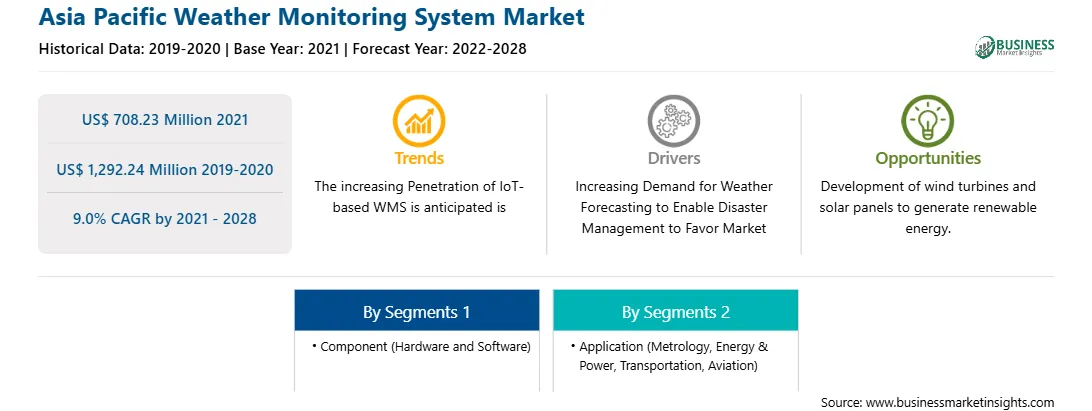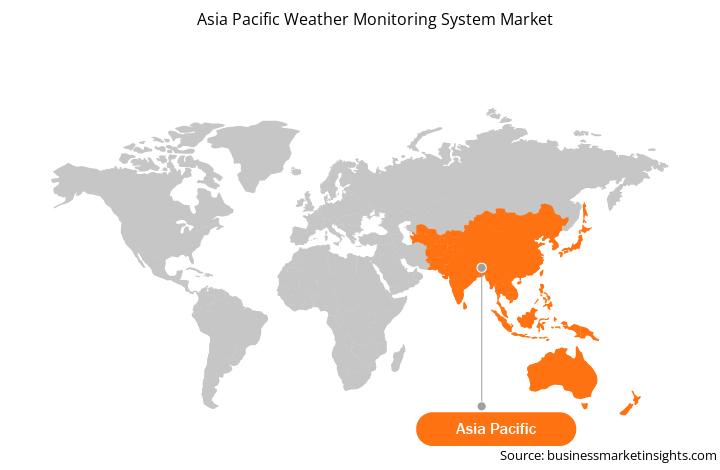Governments have initiated several renewable energy generation projects to meet the demand for energy without hampering the environment. Wind turbines and solar panels are the primary sources of generating renewable energies. The weather monitoring system (WMS) generates wind energy, and it offers high accuracy measurement of radiation, wind speed, wind direction, air temperature, humidity, module temperature, and soiling. Further, the weather monitoring system is also used in solar plants as photovoltaic (PV), and its performance depends on the system's quality and weather. The photovoltaic system's output changes as the weather is variable, and the solar radiation data affects the overall performance of PV systems. Weather parameters, including solar radiation data, ambient temperature, relative humidity, wind speed, wind direction, atmospheric pressure, and rain, affect the performance of PV systems. The weather monitoring system (WMS) is one of the most crucial instruments installed in solar PV power plants. A weather monitoring station can be immensely helpful in monitoring the efficiency and performance of any solar power plant. The demand for weather monitoring systems is increasing due to the rising deployment of solar panels and wind turbines. This increasing demand for carbon-neutral energy production has fostered the rapid deployment of offshore wind farms (OWFs). Thus, the growing deployment of wind turbines and solar panels is creating a lucrative opportunity in the weather monitoring system market as solar & wind power plants' energy generation depends on atmospheric conditions.
With new features and technologies, vendors attract new customers and expand their footprints in emerging markets, which will drive the weather monitoring system market growth in Asia Pacific.
Strategic insights for the Asia Pacific Weather Monitoring System provides data-driven analysis of the industry landscape, including current trends, key players, and regional nuances. These insights offer actionable recommendations, enabling readers to differentiate themselves from competitors by identifying untapped segments or developing unique value propositions. Leveraging data analytics, these insights help industry players anticipate the market shifts, whether investors, manufacturers, or other stakeholders. A future-oriented perspective is essential, helping stakeholders anticipate market shifts and position themselves for long-term success in this dynamic region. Ultimately, effective strategic insights empower readers to make informed decisions that drive profitability and achieve their business objectives within the market.

| Report Attribute | Details |
|---|---|
| Market size in 2021 | US$ 708.23 Million |
| Market Size by 2028 | US$ 1,292.24 Million |
| Global CAGR (2021 - 2028) | 9.0% |
| Historical Data | 2019-2020 |
| Forecast period | 2022-2028 |
| Segments Covered |
By Component
|
| Regions and Countries Covered | Asia-Pacific
|
| Market leaders and key company profiles |
The geographic scope of the Asia Pacific Weather Monitoring System refers to the specific areas in which a business operates and competes. Understanding local distinctions, such as diverse consumer preferences (e.g., demand for specific plug types or battery backup durations), varying economic conditions, and regulatory environments, is crucial for tailoring strategies to specific markets. Businesses can expand their reach by identifying underserved areas or adapting their offerings to meet local demands. A clear market focus allows for more effective resource allocation, targeted marketing campaigns, and better positioning against local competitors, ultimately driving growth in those targeted areas.

The Asia Pacific Weather Monitoring System Market is valued at US$ 708.23 Million in 2021, it is projected to reach US$ 1,292.24 Million by 2028.
As per our report Asia Pacific Weather Monitoring System Market, the market size is valued at US$ 708.23 Million in 2021, projecting it to reach US$ 1,292.24 Million by 2028. This translates to a CAGR of approximately 9.0% during the forecast period.
The Asia Pacific Weather Monitoring System Market report typically cover these key segments-
The historic period, base year, and forecast period can vary slightly depending on the specific market research report. However, for the Asia Pacific Weather Monitoring System Market report:
The Asia Pacific Weather Monitoring System Market is populated by several key players, each contributing to its growth and innovation. Some of the major players include:
The Asia Pacific Weather Monitoring System Market report is valuable for diverse stakeholders, including:
Essentially, anyone involved in or considering involvement in the Asia Pacific Weather Monitoring System Market value chain can benefit from the information contained in a comprehensive market report.